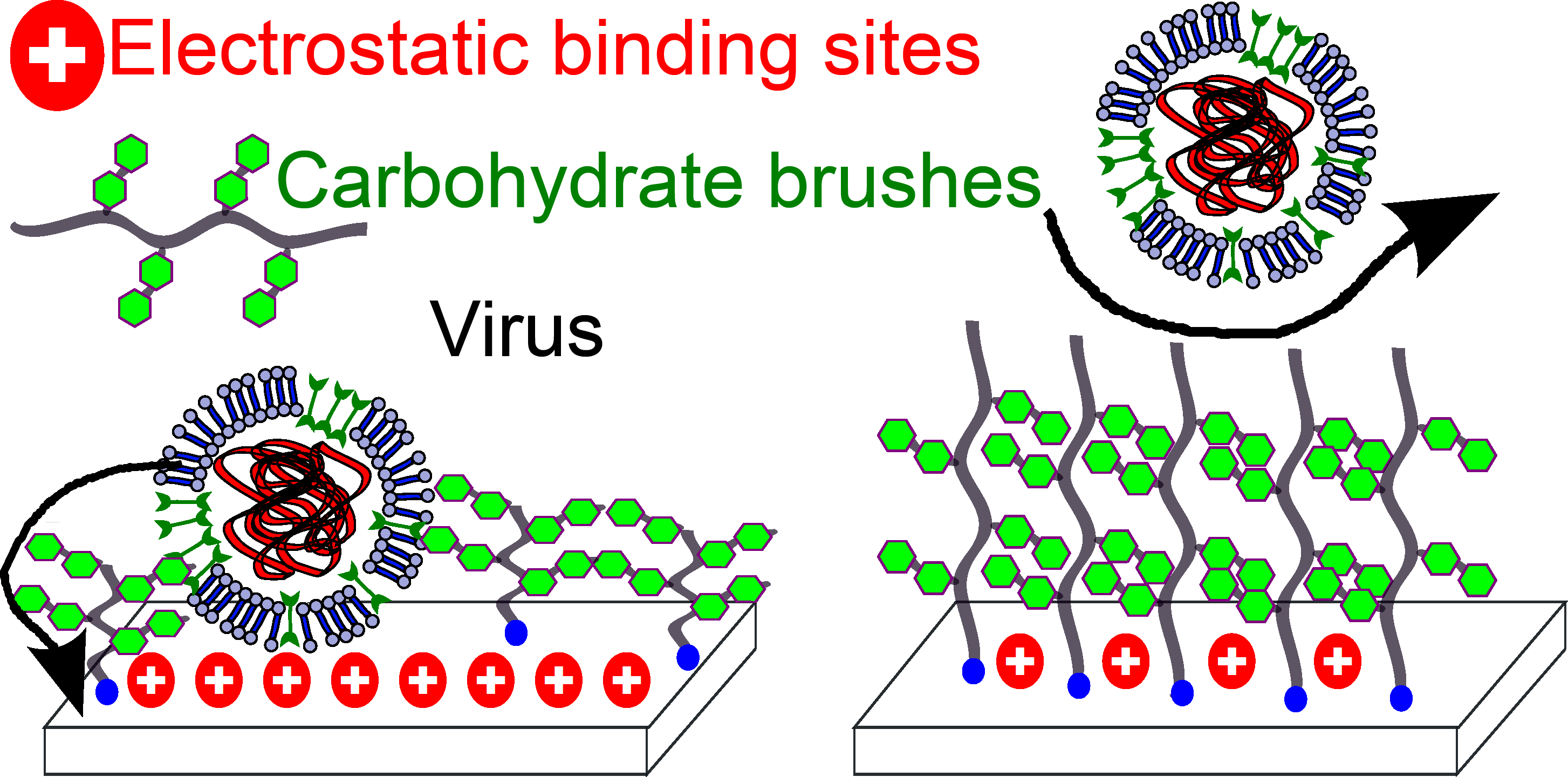Carbohydrate‐Based Polymer Brushes Prevent Viral Adsorption on Electrostatically Heterogeneous Interfaces
Published in Macromolecular Rapid Communications, 2018
Recommended citation: Kumar R., Kratzer D., Cheng K., Prisby J., Sugai J., Giannobile W.V., Lahann J., (2018) Macromolecular Rapid Communications, 1800530.

Chemical heterogeneity on biomaterial surfaces can transform its interfacial properties, rendering nanoscale heterogeneity profoundly consequential during bioadhesion. To examine the role played by chemical heterogeneity in the adsorption of viruses on synthetic surfaces, a range of novel coatings is developed wherein a tunable mixture of electrostatic tethers for viral binding, and carbohydrate brushes, bearing pendant α‐mannose, β‐galactose, or β‐glucose groups, is incorporated. The effects of binding site density, brush composition, and brush architecture on viral adsorption, with the goal of formulating design specifications for virus‐resistant coatings are experimentally evaluated. It is concluded that virus‐coating interactions are shaped by the interplay between brush architecture and binding site density, after quantifying the adsorption of adenoviruses, influenza, and fibrinogen on a library of carbohydrate brushes co‐immobilized with different ratios of binding sites. These insights will be of utility in guiding the design of polymer coatings in realistic settings where they will be populated with defects. Download paper here